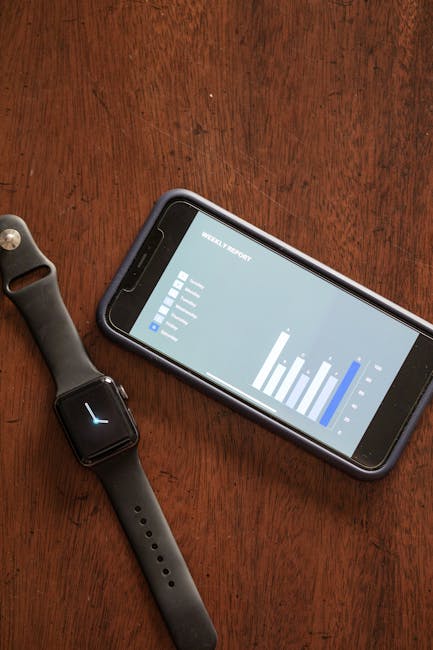Grammarly Rebrands as Superhuman and Launches Superhuman Go
In a strategic repositioning, the company behind the popular writing tool Grammarly is renaming its corporate identity to Superhuman while keeping the Grammarly product name familiar for users. At the same time, the company is rolling out Superhuman Go — an AI-powered assistant integrated into the existing Grammarly browser extension. This move signals a shift from a single-purpose writing utility toward a broader AI-driven productivity suite that blends writing assistance, email workflows, and contextual integrations.
What is Superhuman Go and how does it work?
Superhuman Go is an AI assistant embedded in the Grammarly extension that provides real-time writing suggestions, feedback on tone and clarity, and task automation by connecting to other apps. Once users enable the assistant, they can authorize access to services such as Gmail, Google Drive, Google Calendar, and Jira (plus other supported apps) so the assistant can draw contextual signals to improve outputs.
Core capabilities
- Contextual writing assistance: Tailored edits and tone suggestions based on the document or email context.
- App integrations: Connect to productivity apps to fetch availability, attach relevant documents, or reference tickets and CRM entries.
- Task automation: Use the assistant to log tickets, draft responses, or fetch scheduling options when coordinating meetings.
- Agent marketplace: Try specialized agents for particular tasks (for example, drafting a release note or preparing a project summary) available from the company’s agent store.
Why the rebrand matters
Renaming the corporate entity to Superhuman reflects a strategy to expand beyond grammar and style correction into a full productivity layer that sits across email, documents, and collaborative tools. While the Grammarly product name will remain on the consumer-facing tool, the Superhuman identity signals a broader ambition: to become a unified AI productivity provider that equips users with context-aware assistants across workflows.
From writing tool to productivity suite
Over the past few years, the company has broadened its scope through product acquisitions and feature expansion, effectively transforming Grammarly from a focused writing app into a platform-centric business. Superhuman Go is the next step in that evolution: an assistant that not only suggests phrasing but can also act on user intent when given secure access to relevant apps and data systems.
How will Superhuman Go use app integrations and company data?
The assistant works by connecting to third-party apps to enrich its context window. With proper permissions, Superhuman Go can:
- Check calendar availability and propose meeting times.
- Locate and attach documents from cloud storage when composing emails.
- Log or update tickets in issue trackers like Jira based on email threads or prompts.
- Pull CRM or internal data (planned roadmap) to tailor messages or summarize client histories.
The company plans to extend connectors to enterprise systems and CRMs so the assistant can recommend precise, personalized edits or automatically populate sections of documents and email drafts with accurate information.
Is Superhuman Go secure and privacy-conscious?
Security and privacy are core considerations when an assistant accesses calendars, email, and internal systems. Superhuman Go is opt-in: users must toggle the assistant on within the Grammarly extension and explicitly authorize connections to each third-party app. The product documentation emphasizes user control over permissions and the ability to disconnect apps at any time.
For organizations, admin controls and enterprise policies will be important to limit data exposure. Companies adopting Superhuman Go should expect granular access settings, audit logs, and the option to keep sensitive sources disconnected unless a governance review approves them.
What does this mean for individual and business users?
Superhuman Go is available to all Grammarly users as an opt-in feature, with tiered subscription options that bundle the assistant differently:
- Pro plan: Priced at $12 per month (billed annually) and includes enhanced grammar, tone support across multiple languages, and access to the AI assistant’s core writing features.
- Business plan: Priced at $33 per user per month (billed annually) and provides advanced collaboration, centralized admin controls, and access to Superhuman Mail and additional integrations suited for teams.
These pricing tiers reflect the company’s intent to serve both individual creators and enterprise customers who need administrative controls and deeper integrations.
How to enable Superhuman Go
- Open the Grammarly browser extension.
- Locate the Superhuman Go toggle in the extension settings.
- Enable the toggle and follow prompts to connect the desired apps (Gmail, Drive, Calendar, Jira, etc.).
- Adjust permission and privacy settings in the extension dashboard.
After setup, users can experiment with different agents from the agent store to tailor the assistant to specific workflows, such as drafting investor updates, summarizing meeting notes, or preparing code review summaries.
How does Superhuman Go compare to other AI assistants?
Superhuman Go positions itself as a deeply integrated writing- and email-focused assistant. Its differentiator is the fusion of Grammarly’s long-standing writing expertise with expanded contextual access across productivity apps, enabling actionable outputs rather than only suggestions.
Enterprises looking to adopt assistant-driven workflows should weigh several factors when comparing solutions:
- Depth of domain knowledge for writing quality and tone.
- Range and security of third-party integrations.
- Admin controls, compliance features, and enterprise deployment options.
- Ability to customize agents or build company-specific connectors to internal systems.
How will this impact AI-driven document and email workflows?
By combining automated content generation with connections to calendars, cloud storage, and ticketing systems, Superhuman Go can reduce routine friction in daily work. Expect to see productivity improvements in areas such as:
- Faster, context-aware email drafting and follow-ups.
- Automated retrieval of supporting documents when preparing external communications.
- Streamlined scheduling and meeting coordination from within the compose window.
- Pre-populated document sections based on CRM or internal database queries.
These capabilities echo broader industry trends where AI assistants are being woven into the fabric of knowledge work. For readers interested in how AI memory and contextual systems are evolving, see our coverage of AI Memory Systems: The Next Frontier for LLMs and Apps and why high-quality data matters in model performance in The Role of High-Quality Data in Advancing AI Models.
For enterprises evaluating assistant deployments at scale, our piece on AI in Enterprise: Navigating Opportunities and Challenges offers frameworks for governance and adoption.
What are potential challenges and limitations?
Despite its promise, Superhuman Go will face several adoption hurdles:
- Data sensitivity and compliance: Organizations must manage access to sensitive systems and ensure the assistant complies with data retention and privacy policies.
- Accuracy and hallucinations: As with other AI assistants, outputs should be validated; pulling structured data from CRMs or internal databases is necessary to reduce errors.
- Integration gaps: The assistant’s value depends on the breadth and depth of connectors offered; not all enterprise systems will be supported initially.
How should teams prepare to adopt Superhuman Go?
Teams should follow a phased adoption approach:
- Start with a pilot group to test real-world tasks and gather feedback on accuracy and utility.
- Define access controls and data governance policies before broad rollout.
- Train employees on best practices for prompting, validating outputs, and using connectors safely.
- Iterate on agent configurations and integrations based on pilot learnings.
Conclusion: What to watch next
The rebrand to Superhuman and the debut of Superhuman Go mark a notable pivot for the company: it’s moving from a best-in-class grammar tool toward offering AI assistants that act within user workflows. Success will hinge on reliable integrations, enterprise-safe controls, and the assistant’s ability to deliver accurate, context-aware actions that save time.
As Superhuman expands connectors and agent capabilities, expect ongoing updates that bring deeper CRM and internal system integrations, richer agent templates, and administrative features for organizations. For teams and professionals, now is an opportune moment to evaluate pilot use cases where contextual writing assistance and automated email workflows can produce immediate productivity gains.
Call to action
Want to test Superhuman Go in your workflow? Enable the assistant in the Grammarly extension, try agents from the agent store, and run a short pilot with your team to measure time savings and quality improvements. For enterprise readers, consider establishing a governance plan before enabling connectors to internal systems. Stay tuned to Artificial Intel News for hands-on analysis and implementation guides as this platform evolves.





